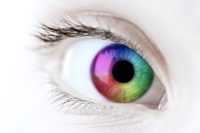What are the symptoms of "Arc Eye"?

Certain types of UV radiation can produce an injury to the surface and mucous membrane (conjunctiva) of the eye called "arc eye," "welders' eye" or "arc flash." These names are common names for "conjunctivitis" - an inflammation of the mucous membrane of the front of the eye. The symptoms include:
- pain - ranging from a mild feeling of pressure in the eyes to intense pain in severe instances
- tearing and reddening of the eye and membranes around the eye
- sensation of "sand in the eye" or abnormal sensitivity to light
- inability to look at light sources (photophobia)
The amount of time required to cause these effects depends on several factors such as the intensity of the radiation, the distance from the welding arc, the angle at which the radiation enters the eye, and type of eye protection that the welder or bystander is using. However, exposure to just a few seconds of intense UV light can cause arc eye. These symptoms may not be felt until several hours after exposure.
Are there other welding hazards to the eyes?
Long-term exposure to UV light can produce cataracts in some persons.
Visible light from welding processes is very bright and can overwhelm the ability of the iris of the eye to close sufficiently and rapidly enough to limit the brightness of the light reaching the retina. The result is that the light is temporarily blinding and fatiguing to the eye.
A serious concern is the "blue light hazard" which is the temporary or permanent scarring of the retina due to its sensitivity to blue light, around 440 nm wavelength. Blindness may result.
Exposure to infrared light can heat the lens of the eye and produce cataracts over the long term.
Source: www.ccohs.ca Canadian Centre for Occupational Health and Safety (CCOHS)
135 Hunter Street East Hamilton, Ontario Canada L8N 1M5 905-572-2981
Looking for a reprint of this article?
From high-res PDFs to custom plaques, order your copy today!








